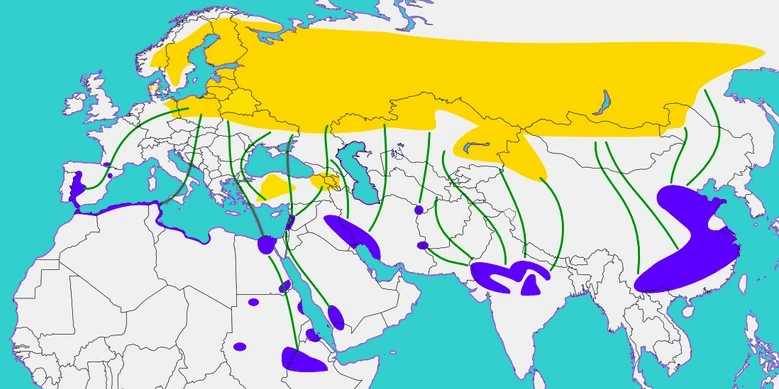By Marton Bussay (MB) and Wergosum
Cranes and their migrations have been around forever. They are associated in our memories with cold and short fall days, but they also bring up thoughts about freedom and the comforting side of cyclic natural phenomena: the Cranes are free birds living their free lives but they are dependable, we can count on them and they will return, year after year, from their overwintering areas. There is more to spotting a flock of migrating cranes than just birds flying by far over our heads, and letting us know, with their loud calls, that they are still around…
The weather at Budapest Airport on 4 November 2022
In Budapest, the days around the 2022 Haloween (31 Octobre) and Hallowmas (1 November) had “typical All Saints’ Day weather”: windy, rainy, gloomy…


A simple picture taken with a cellphone
Around 12:15 on 4 November, one of us (MB) was standing on the terrasse (47.4399400 N, 19.2242748E) of the old Terminal 1 of Budapest airport1. The whole atmosphere of the airport was very gloomy and surreal because of the fog.

My attention was attracted by the typical loud call of cranes and I spotted a large numbers of birds directly overhead, flying south. I took a picture with my Xiaomi Mi 11i, a phone renowned for the quality of its camera2, with around 2.5 times digital magnification; the shutter speed was 1/18 and ISO400. On the resulting photograph, the individual cranes are clearly visible with some of them appearing greyed out because they were flying at the height of the low clouds or in the fog.
Where are those cranes going?
The loud call of the cranes is a bit of a mystery. According to Wkipedia_FR, flying cranes call every 10 to 15 seconds on average, which must entail a loss of water and of energy. But apparently this is outweighed by some other advantages, assumed to be navigational. The sound can be heard four kilometers away3. Wikipedia_FR and Wikipedia_EN have additional information about the flight of cranes and their migratory patterns. Cranes, like storks, are accustomed to using thermal lift to soar and migrate by moving from one thermal to another, avoiding flapping flight. In this way, they glide and save energy. Flapping flight is used in bad weather, as was the case on 4 November over Budapest, at night or over the sea. Their speed can reach 90 km/h, with a flight altitude of 200 m to 1,500.

How many birds are there?
In fact, some flocks, keeping their typical V or Y formations may fly 4000 kilometers or more to reach their overwintering areas, incessantly emitting their loud calls. In Europe, the common crane predominantly breeds in Boreal and Taiga forest. The common crane is said to a fairly social bird while not breeding. Wikipedia adds that flocks of up to 400 birds may be seen flying together during migration.
How many birds did the Xiaomi camera capture?

The graph on the right shows the same picture with the cranes digitized on arbitray axes. The digitization was actually rather precise because the zoomed picture shows individual birds well, as mentioned above, with just a few poorly visible because they were flying in the low clouds. We counted 457 birds, which is more than the “up to 400 birds” mentioned by Wikipedia. In fact, 3 or 4 other, distinct groups of cranes flew over the airport but only one was photographed.
Altogether, this is probably more than 1000 birds, and the large numbers of migrating flocks of cranes spotted all over Europe every year lends credibility to the fact that IUCN classifies Cranes as LC4.
To conclude…
There are, however, many examples of migrating birds that have been exterminated or their populations severely reduced by human carelessness or greed or both, directly or indirectly through habitat destruction or climate change: Wikipedia_FR mentions that since the 2000s, due to global warming, some of the birds have been over-wintering eastern-French marshes.
So let us enjoy the cranes, and their almost haunting call, while we still can. And do what we can to protect them.
- The terminal has not been used for 9 years and its re-aperture has been delayed by the reduction in traffic brought about by the COVID-19 pandemic. Fortunately – or unfortunately, depending on the point of view – the reopening of the Terminal is now scheduled for 2024. On the 4th of November, according to FlightRadar, there were 158 flights at Budapest airport. [↩]
- Refer to this and this link for details[↩]
- It is an anatomical feature of the crane’s wishbone that explains its exceptional power.[↩]
- Least concern[↩]